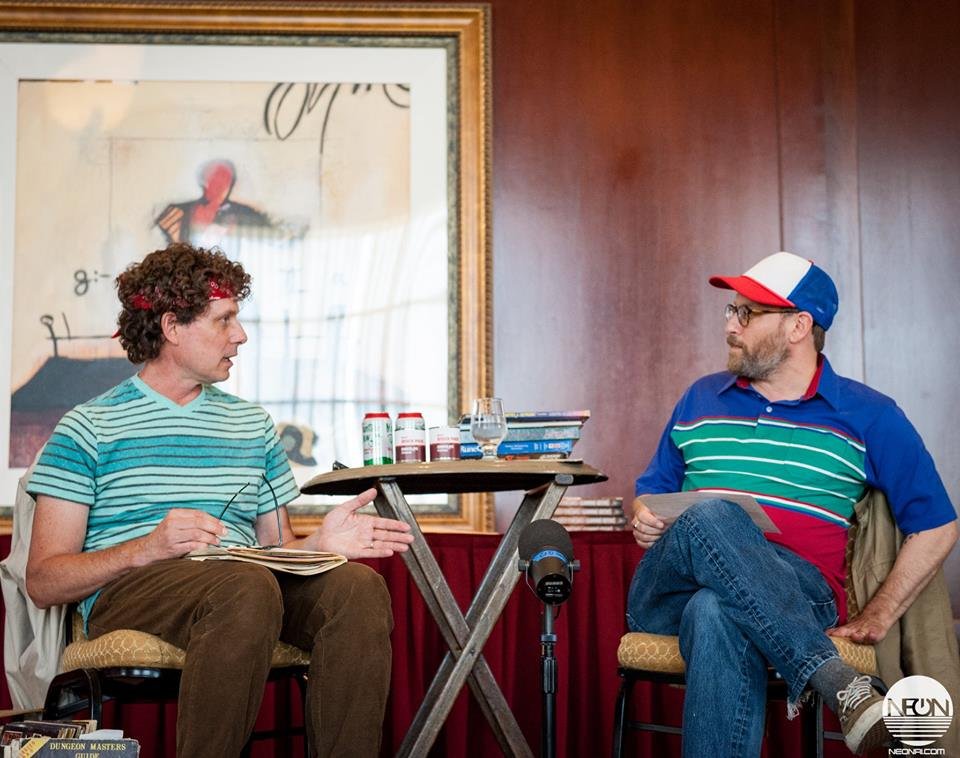I celebrated the 1980s
I was thrilled to be part of NEON RetroFest in Warwick (Providence) on Aug 24.
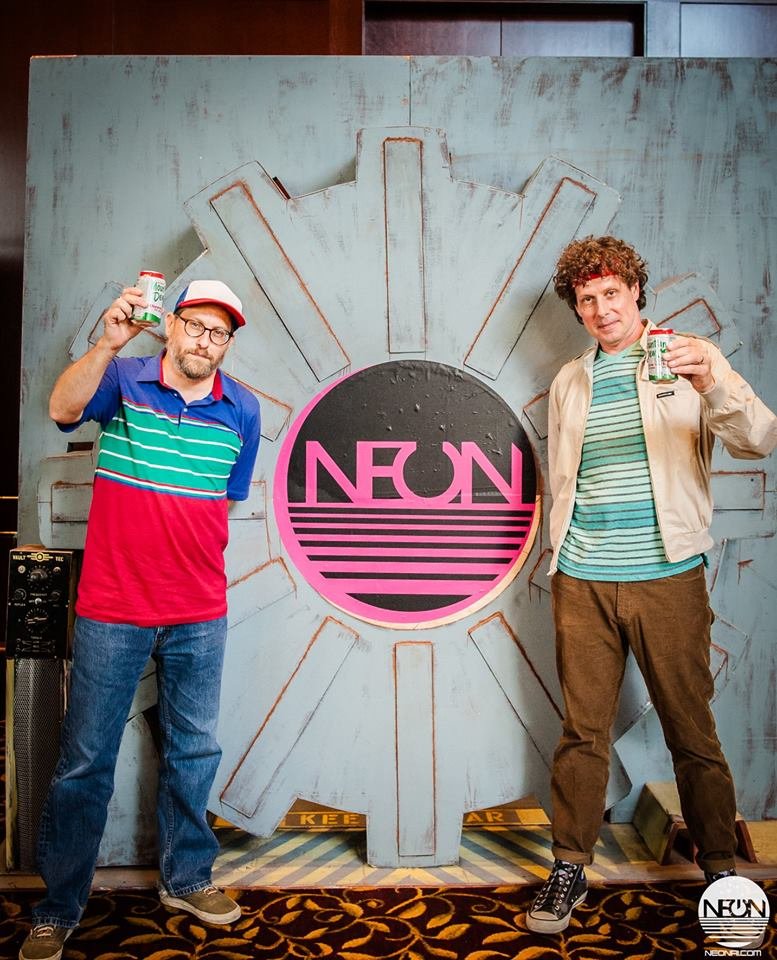
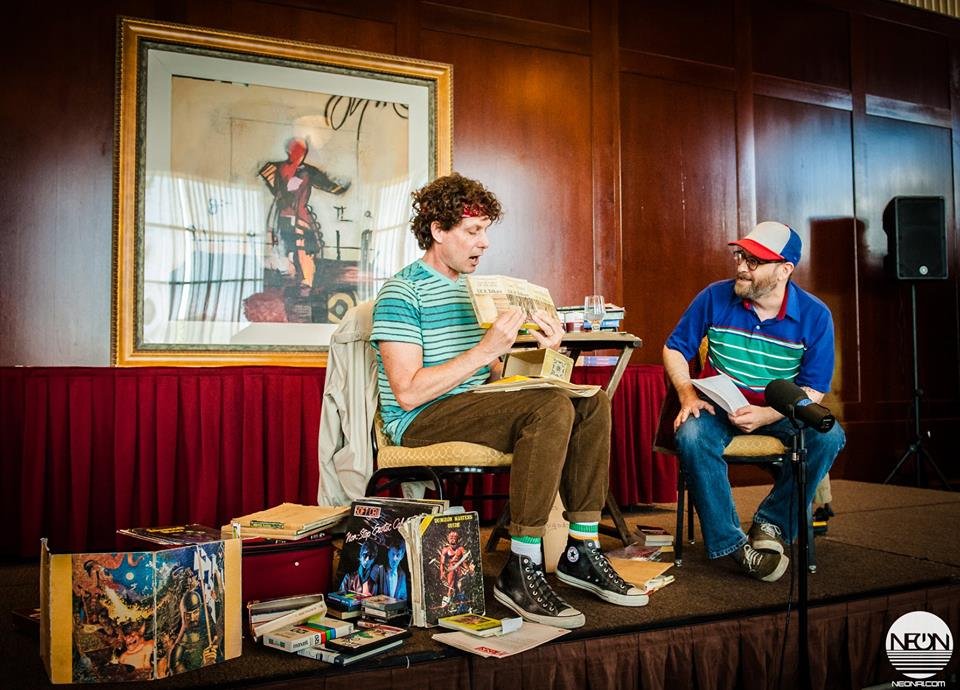
The Providence Journal previewed the event here. 
We played Galaga and Star Castle, and drank Mountain Dew. I talked about "How D&D Changed the World." Peter Bebergal and I nerded out about the 1980s at our "INTELLI-VISION: THE PETER AND ETHAN PUBLIC ACCESS TV SHOW" event-- here's our intro video. Rad!


New game Obduction in works from makers who brought us Myst and Riven

Remember Myst? That amazing, groundbreaking, mind-bending game that mystified you back in the 1990s? Then came Riven in 1997. The two were the best-selling computer games of the 20th century. Then, not much of interest from brothers Robyn and Rand Miller, the team who founded the game company Cyan and dreamed up these two revolutionary, open-ended adventure puzzle games. But there's a new game in the works from the brothers Miller, called Obduction.

Remember Myst? That amazing, groundbreaking, mind-bending game that mystified you back in the 1990s? Then came Riven in 1997. The two were the best-selling computer games of the 20th century.
Then, not much of interest from brothers Robyn and Rand Miller, the team who founded the game company Cyan and dreamed up these two revolutionary, open-ended adventure puzzle games which, compared to the lightning-fast reload speed of a Call of Duty, plodded along at the pace of a hibernating snail.
Those games plopped you onto a proto-steampunk island where, well, it wasn’t exactly clear what your goal was. But it was a fascinating ride. You wandered around, looking at every map and book, and being lured in by the preternatural quiet and creepy ambience soundtrack. What was a clue? What was a puzzle? What was a red herring?
As Myst celebrates its 20th anniversary, there’s some new activity. A new game from Cyan. One in the spirit of the first two, and one that just might provide the same tricksy thrills and head-scratching puzzles of Myst and Riven.
As I write for GeekDad, there's a new game in the works called Obduction. Check out the rest of the post here.
Two New Books Lavish in 80s Video Game Culture
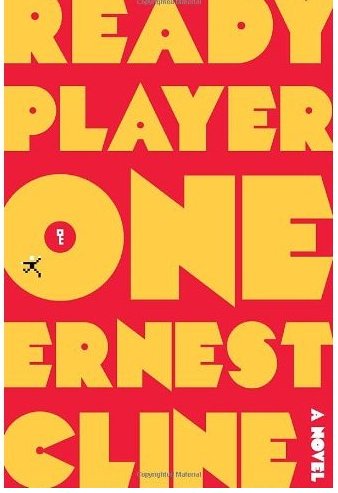 READY PLAYER ONE By Ernest Cline [Crown, 374 pp. $24.00]
READY PLAYER ONE By Ernest Cline [Crown, 374 pp. $24.00]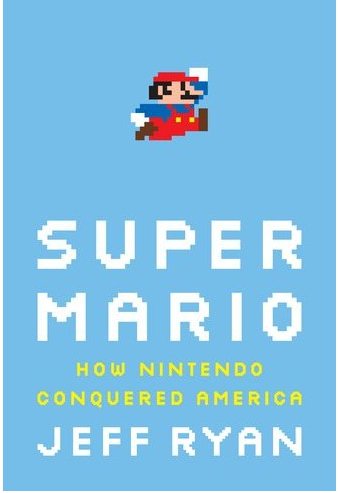 SUPER MARIO: How Nintendo Conquered America, By Jeff Ryan [Portfolio, 292 pp., $26.95]It’s easy to cast a long shadow of nostalgia across your geeky past, now that you are standing taller.
SUPER MARIO: How Nintendo Conquered America, By Jeff Ryan [Portfolio, 292 pp., $26.95]It’s easy to cast a long shadow of nostalgia across your geeky past, now that you are standing taller.
There’s no shame, no risk of ridicule or reprisal, now that nerds top the food chain. More confident, you might even find yourself admitting, “Sure, I used to play Dungeons & Dragons. Had an 18th-level paladin named Argathon. One righteous orc-slaying dude.’’
I do. I played more than my share of video and role-playing games during a less friendly era, the 1980s. Fantasy and science fiction had not come out of the closet. The financial success of genre franchises had not yet made geekery acceptable. Gaming culture was nonexistent.
A bonus of my then fringe game habit: It felt user-driven, indie, even subversive. When free time, not money, was my currency, gaming created a peculiar, and intimate, community. I inserted real quarters into singular machines shared with others. No Internet. No interruptions from texts. Total immersion in virtual worlds was possible even as, paradoxically, cutting-edge special effects were analog, not digital.
And a game of Donkey Kong, its chunky graphics about as sophisticated as the dungeons I sketched on graph paper, might last only a minute, while a game of D&D, limited to the primitive technology of dice, pencils, and brainwaves, would take months.
Differing both in approach and success level, two new books -- Ernest Cline’s dystopian sci-fi novel “Ready Player One’’ and Jeff Ryan’s historical reportage “Super Mario: How Nintendo Conquered America’’ -- plumb and pay tribute to the genesis of our gaming culture. To a time when to find out who was the best at Asteroids or Galaga, you hoofed it down to the mall to witness the heroism gracing the “high score’’ screen, where someone’s tag -- “ZAK’’ or “LED’’ -- was hallowed only in the halls of your local arcade.
 Ryan, a video game critic, painstakingly charts the Japanese company Nintendo’s startling success. When its 1980 Space Invaders rip-off Radar Scope failed, technicians retrofitted 2,000 of the machines with a new arcade game, designed by an underling named Shigeru Miyamoto. Donkey Kong was born, as was the character Mario, based on a real mustachioed landlord who once showed up at Nintendo’s US headquarters to collect the rent and “grew so incensed he almost jumped up and down.’’ The red overalls and hat came later.
Ryan, a video game critic, painstakingly charts the Japanese company Nintendo’s startling success. When its 1980 Space Invaders rip-off Radar Scope failed, technicians retrofitted 2,000 of the machines with a new arcade game, designed by an underling named Shigeru Miyamoto. Donkey Kong was born, as was the character Mario, based on a real mustachioed landlord who once showed up at Nintendo’s US headquarters to collect the rent and “grew so incensed he almost jumped up and down.’’ The red overalls and hat came later.
Ryan does a fine job describing Nintendo’s growing rivalry with Atari and Sega and subsequent shrewd moves, as arcades shuttered, to dominate the home console market. Super Mario Bros. became the “dense’’ game-changing killer app, Ryan writes, which “called for deep exploration instead of facile button mashing.’’ A new generation of gamers could explore endlessly, wandering tubes, hopping platforms, and collecting shells and coins. Nabbing the high score wasn’t the point. Mario helped kill quarter-based game culture.
Ryan can be insightful, and his prose colorful, but also distracting. Images and metaphors compete and clash - the Zucker Brothers follow Derrida, a music reference is slammed cheek-by-jowl with a baseball analogy. At times, the text seems translated from the Japanese. What is “a nebula’s improvement in graphics’’? A “veritable sleuth of unsold Teddy Ruxpins’’? It’s also difficult to picture the graphical evolution of Mario and his game world when the book has no illustrations.
Most frustratingly, we never hear directly from any Nintendo designers, not even Miyamoto or company head Hiroshi Yamauchi. Curiously little on-the-ground reporting of personal travails or internal corporate tensions. After the first 100 pages, the narrative devolves into a cheery laundry list of game releases. It’s as if Ryan reported the book from the distance of the Internet.
Still, “Super Mario’’ remains an important link to understanding how we got from Donkey Kong to Wii, and why the wee Jumpman still rules. “Mario is the id: working off of instinct, never having much of a plan, always able to leap into the middle of things. We all become younger as we play Mario, because when we’re Mario we simply play.’’
More so than Ryan, Cline banks on blatant nostalgia for our geeky pasts. The year is 2044 and the young protagonist of “Ready Player One,’’ 17-year-old orphan Wade Watts, narrates his own progress in an elaborate, online scavenger hunt. He lives as an economic refuge in a crime-ridden shanty town, “The Great Recession was now entering its third decade,’’ Watts says, and like many who have given up on the “real world,” he spends his waking hours as an avatar, named Parzival, in a massive, Matrix-like virtual space called OASIS.
Created by a reclusive, Reagan-era game designer, the game melds Tolkienesque riddles with ’80s pop arcana - from Matthew Broderick’s lines in “WarGames’’ to dungeons designed by D&D co-creator Gary Gygax. Solve the puzzles and you inherit the game designer’s vast fortune. An old-fashioned “high score’’ leader board pops up periodically in the narrative to remind us who’s winning.
Such is the post-apocalyptic, nerd-friendly premise of “Ready Player One.’’ Watts is one of thousands of other players known as “gunters,” or “egg hunters” because they are looking for Easter eggs, or clues, hidden in the thousands of designer virtual lands that populate the OASIS. Watts steeps himself in the period, eschewing the world of 2044 to effectively live and breathe the era’s most mundane factoids, memorizing characters from “The Breakfast Club,” plot points from “Star Wars,” tactics for an obscure arcade game like Joust. Clearly having fun with the reader, and himself, Cline stuffs his novel with a cornucopia of pop culture, as if to wink to the reader, “Remember the TRS-80? Wasn’t it cool?’’ The conceit is a smart one, and we happily root for Watts/Parzival and his gaming buddies on their quest for the big egg -- and hope they win before a villainous, corporate-run gaming guild declares “game over.’’
Not that the novel is without its problems. Cline, the screenwriter who gave us “Fanboys,’’ oddly chooses a first-person narrator. What is the occasion for a 17-year-old explaining the plot of “Blade Runner,’’ or that “ ‘2112,’ Rush’s classic sci-fi-themed concept album’’ hit record stores “in 1976, back when most music was sold on twelve-inch vinyl records’’? Long, awkward passages of exposition bog down the story, and conflict with Watts’s own distinctive narrative voice. A third-person, roving point of view would more logically allow for these passages of authorial intrusion. Also a bummer: Much of the action is virtual, statically describing Watts’s online moves: “I took a screenshot of this illustration and placed it in the corner of my display.’’
One can picture much of this working better on the big screen, where asides won’t be needed. We’ll hear “She Bop” on the soundtrack or see a character wearing a “Muppet Show” T shirt and get it. No surprise, Cline’s movie adaptation of Ready Player One has already been sold.
But ignore these narrative hiccups and “Ready Player One’’ provides a most excellent ride. Once the story is up and running, and the novel blasts to its world-ending climactic battle, I found the adventure story and its revenge of the dorks dream fully satisfying.
Both Cline and Ryan’s books lavish in the toys and pastimes of our youth. And also nostalgia, which may soft-focus the hard and real edges, and yet we're happy to lavish in it nonetheless. We aging humans traffic in it. Perhaps we must to make sense of our past lives.
Like the film “Super 8,’’ these two books play also into a final fantasy: that things were once simpler. Today, some attribute the violence in Norway, unfairly, to video games. Suddenly ’80s pop culture looks less troubled. But of course, the arcade and role-playing games of yore were controversial scourges bent on the destruction of youth. Remember?
Classic Video Game Competition Returns to Funspot
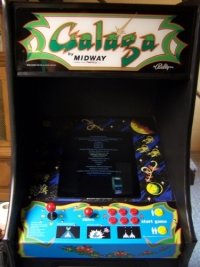 If you’re a 30- or 40-something geek like me, you probably played video games as a kid. Not on the personal computer, which in the 70s and 80s was only in its infancy. I mean the big, hulking, stand-up video arcade machines. The ones that ate your allowance (or cafeteria milk money): Pong, Space Invaders, Galaga, Pac-Man, Donkey Kong, Dig Dug, Joust, Centipede, Tron, Dragon’s Lair, and my personal favorite, Robotron 2084.
If you’re a 30- or 40-something geek like me, you probably played video games as a kid. Not on the personal computer, which in the 70s and 80s was only in its infancy. I mean the big, hulking, stand-up video arcade machines. The ones that ate your allowance (or cafeteria milk money): Pong, Space Invaders, Galaga, Pac-Man, Donkey Kong, Dig Dug, Joust, Centipede, Tron, Dragon’s Lair, and my personal favorite, Robotron 2084.
As I wrote about last summer after visiting the American Classic Arcade Museum at Funspot in Weirs Beach, New Hampshire, these games have had a powerful effect on an entire generation. And now that generation is all grown up. Like with a lot of childhood or adolescent hobbies looked back on with the 20-20 hindsight of adulthood, these old school arcade games can generate a powerful wave of nostalgia.
To sate this desire, the annual International Classic Videogame Tournament returns to the American Classic Arcade Museum (ACAM) this weekend (Thursday, June 2 through Sunday, June 5). ACAM is the “first 501c3 non-profit organization dedicated to preserving and displaying vintage coin-operated amusements” (so sez the website). If you saw the documentary King of Kong, ACAM is the familiar site of the Donkey Kong showdown. If you were at PAX East in Boston, you probably saw the traveling collection of video games they brought down from New Hampshire for all of us to play. Wicked fun.
In the tourney, players will compete in a variety of arcade games. To maintain a fair and balanced playing field, ACAM says, the game titles won’t be announced until the first day of the event. The only exception will be the first ever “World Championships of Galaga®,” to celebrate Galaga’s 30th anniversary.
What’s cool is, unlike other museums, at ACAM you can touch the displays. Some 300+ games are available for play. Best of all, the place is a time capsule. Classic 80s music is pumped into arcade, and there isn’t a song or a game, any newer than 1987.
And if you support the preservation of these classic games, please donate to ACAM.
Ethan Gilsdorf is the author of the award-winning book Fantasy Freaks and Gaming Geeks: An Epic Quest for Reality Among Role Players, Online Gamers, and Other Dwellers of Imaginary Realms, his travel memoir investigation into fantasy and gaming subcultures the Huffington Post called “part personal odyssey, part medieval mid-life crisis, and part wide-ranging survey of all things freaky and geeky,” National Public Radio described as “Lord of the Rings meets Jack Kerouac’s On the Road” and Wired.com proclaimed, “For anyone who has ever spent time within imaginary realms, the book will speak volumes.” Follow Ethan’s adventures at http://www.fantasyfreaksbook.com
Violent Video Games Are Good for You
[upcoming events with Ethan Gilsdorf: NYC/Brooklyn 11/22 (panel "Of Wizards and Wookiees" with Tony Pacitti, author of My Best Friend is a Wookiee); Providence, RI: 12/2 (also with Pacitti); and Boston (Newtonville 11/21 and Burlington 12/11) More info ...]
Violent Video Games Are Good for You
 Rock and roll music? Bad for you. Comic books? They promote deviant behavior. Rap music? Dangerous.
Rock and roll music? Bad for you. Comic books? They promote deviant behavior. Rap music? Dangerous.
Ditto for the Internet, heavy metal and role-playing games. All were feared when they first arrived. Each in its own way was supposed to corrupt the youth of America.
It’s hard to believe today, but way back in the late 19th century, even the widespread use of the telephone was deemed a social threat. The telephone would encourage unhealthy gossip, critics said. It would disrupt and distract us. In one of the more inventive fears, the telephone would burst our private bubbles of happiness by bringing bad news.
Suffice it to say, a cloud of mistrust tends to hang over any new and misunderstood cultural phenomena. We often demonize that which the younger generation embraces, especially if it’s gory or sexual, or seems to glorify violence.
The cycle has repeated again with video games. A five-year legal battle over whether violent video games are protected as “free speech” reached the Supreme Court earlier this month, when the justices heard arguments in Schwarzenegger v. Entertainment Merchants.
Back in 2005, the state of California passed a law that forbade the sale of violent video games to those younger than 18. In particular, the law objected to games “in which the range of options available to a player includes killing, maiming, dismembering or sexually assaulting an image of a human being” in a “patently offensive way” — as opposed to games that depict death or violence more abstractly.
But that law was deemed unconstitutional, and now arguments pro and con have made their way to the biggest, baddest court in the land.
In addition to the First Amendment free speech question, the justices are considering whether the state must prove “a direct causal link between violent video games and physical and psychological harm to minors” before it prohibits their sale to those under 18.
So now we get the amusing scene of Justice Samuel Alito wondering “what James Madison [would have] thought about video games,” and Chief Justice John Roberts describing the nitty-gritty of Postal 2, one of the more extreme first-person shooter games. Among other depravities, Postal 2 allows the player to “go postal” and kill and humiliate in-game characters in a variety of creative ways: by setting them on fire, by urinating on them once they’ve been immobilized by a stun gun, or by using their heads to play “fetch” with dogs. You get the idea.
This is undoubtedly a gross-out experience. The game is offensive to many. I’m not particularly inclined to play it. But it is, after all, only a game.
Like with comic books, like with rap music, 99.9 percent of kids — and adults, for that matter — understand what is real violence and what is a representation of violence. According to a report issued by the Minister of Public Works and Government Services in Canada, by the time kids reach elementary school they can recognize motivations and consequences of characters’ actions. Kids aren’t going around chucking pitchforks at babies just because we see this in a realistic game.
And a strong argument can be made that watching, playing and participating in activities that depict cruelty or bloodshed are therapeutic. We see the violence on the page or screen and this helps us understand death. We can face what it might mean to do evil deeds. But we don’t become evil ourselves. As Gerard Jones, author of “Killing Monsters: Why Children Need Fantasy, Super Heroes, and Make-Believe Violence,” writes, “Through immersion in imaginary combat and identification with a violent protagonist, children engage the rage they’ve stifled . . . and become more capable of utilizing it against life’s challenges.”
Sadly, this doesn’t prevent lazy journalists from often including in their news reports the detail that suspected killers played a game like Grand Theft Auto. Because the graphic violence of some games is objectionable to many, it’s easy to imagine a cause and effect. As it turns out, a U.S. Secret Service study found that only one in eight of Columbine/Virginia Tech-type school shooters showed any interest in violent video games. And a U.S. surgeon general’s report found that mental stability and the quality of home life — not media exposure — were the relevant factors in violent acts committed by kids.
Besides, so-called dangerous influences have always been with us. As Justice Antonin Scalia rightly noted during the debate, Grimm’s Fairy Tales are extremely graphic in their depiction of brutality. How many huntsmen cut out the hearts of boars or princes, which were then eaten by wicked queens? How many children were nearly burned alive? Disney whitewashed Grimm, but take a read of the original, nastier stories. They pulled no punches.
Because gamers take an active role in the carnage — they hold the gun, so to speak —some might argue that video games might be more affecting or disturbing than literature (or music or television). Yet, told around the fire, gruesome folk tales probably had the same imaginative impact on the minds of innocent 18th century German kiddies as today’s youth playing gore-fests like “Left 4 Dead.” Which is to say, stories were exciting, scary and got the adrenaline flowing.
Another reason to doubt the gaming industry’s power to corrupt: More than one generation, mine included, has now been raised on violent video games. But there’s no credible proof that a higher proportion of sociopaths or snipers roams the streets than at any previous time in modern history. In fact, according to Lawrence Kutner and Cheryl K. Olson, founders of the Center for Mental Health and Media (a division of the Massachusetts General Hospital Department of Psychiatry), and members of the psychiatry faculty at Harvard Medical School, as video game usage has skyrocketed in the past two decades, the rate of juvenile crime has actually fallen.
Children have always been drawn to the disgusting. Even if the ban on violent games is eventually deemed lawful and enforced in California, the games will still find their way into the hot little hands of minors. So do online porn, and cigarettes and beer. But these vices haven’t toppled Western civilization.
Not yet, anyway — although a zombie invasion or hurtling meteor might. Luckily, if you’re a good enough gamer, you’ll probably save the day.
Ethan Gilsdorf is the author of Fantasy Freaks and Gaming Geeks: An Epic Quest for Reality Among Role Players, Online Gamers, and Other Dwellers of Imaginary Realms, now in paperback.
Pixels of the Past
 Pong, Space Invaders, Galaga, Pac-Man, Donkey Kong, Dig Dug, Joust, Centipede, Tron, Dragon's Lair, and my personal favorite, Robotron 2084.
Pong, Space Invaders, Galaga, Pac-Man, Donkey Kong, Dig Dug, Joust, Centipede, Tron, Dragon's Lair, and my personal favorite, Robotron 2084.
If you're a 30- or 40-something geek like me, you probably played video games as a kid. Not on the personal computer, which in the 70s and 80s was only in its infancy. I mean the big, hulking, stand-up video arcade machines. The ones that ate your allowance (or cafeteria milk money).
As I write about in the my recent article for the Christian Science Monitor "Video game museum gives arcade classics extra lives" (print edition archived here), these games have had a powerful effect on an entire generation. And now that generation is all grown up, like with a lot of childhood or adolescent hobbies looked back on with the 20-20 hindsight of adulthood, these old school arcade games create nostalgia. We have money, we have desire, and we want our childhoods back. If you have kids of your own, that's another reason to dip into the days of 8-bit pixels and dim, humming, cave-like video arcades. The ones near my hometown were called The Space Center and The Dream Machine. Cool.
When generations reach middle age, there's a curious phenomenon: a nostalgia for the way things were kicks in. For me, the "way" was that pre-Mac, pre-iPhone, pre-iPod, pre-Internet world where people called each other on payphones and left notes in each other's lockers to communicate, made plans ahead of time, and had to meet in public, in person (gasp!) in order to play a video game. None of this hunkering down for hours at a time to immerse oneself in online games; these games of yore, like say Missile Command or cost a quarter or fifty cents, and for me anyway, they lasted about 10 minutes tops. The little Pac-Man or Space Invader was iconic, symbolic, crude. It was like a metaphor for a little you.
The draw of old video games, like old anything, is a desire feel closer to a unspoiled experience. As Henry Lowood says in my article, video game game nostalgia is about "stripping away the surface layers associated with modern games gives them the feeling of being closer to something we might call core game-play." Modern games are inordinately complex and require the mastery of bunches of buttons. The arcade game had maybe two or three buttons and a joystick. Sometimes just a joystick ---- a cave man bone tool compared to games like Gears of War or World of Warcraft.
We want to be connected to that time when things were, yep, simpler. When we didn't have all these fancy 3D computer animation technologies that produced photorealistic environments. When you could register your initials on the top score list of your favorite game, and enjoy a moment of fame ... until the next person came along to knock you off the leader board.
Ethan Gilsdorf is the author of Fantasy Freaks and Gaming Geeks: An Epic Quest for Reality Among Role Players, Online Gamers, and Other Dwellers of Imaginary Realms, which comes out in paperback in September. Contact him through his website, www.ethangilsdorf.com.
‘Extra Lives’ asks: What’s in a game?
Must video games remain mere entertainment. Could they provide narratives that books, movies, and other vehicles for story delivery can’t? Might they even aspire to art?
Tom Bissell's new book "Extra Lives: Why Video Games Matter" (Pantheon, 240 pp., $22.95) aims a tentative mortar shot at these targets. It comes at the right time. These are potent days for video gamers. The baby steps taken by Pong, Space Invaders, and Doom have become the thundering footfalls of Halo, Gears of War, and Mass Effect.
Production budgets for big games like Grand Theft Auto and World of Warcraft rival those of movies.The industry rakes in billions, turning formerly closeted code monkeys and hackers into minor, Lamborghini-driving celebrities. Popular game sequel release dates have become events unto themselves, inspiring fans to line up at midnight outside their local Game Stops.
The problem is, no one knows how to talk about gaming — these Xbox and PlayStation binges that nervous parents worry could turn their kids into hollow-faced, emotionally-stunted, Dorito-eating dorks.
I'm sort of joking. But it's true: folks worry about the long term effects of kids --- and adults --- who increasingly play these sorts of elaborate, visually-rich and hypnotically immersive games, and not old-school games. Monopoly anyone?
As with any mass movement accelerating into the passing lane of pop culture, gaming requires its own discourse. Yet, the language we use to discuss, evaluate, and dissect this new medium is largely monosyllabic: good, bad, like, no like.
Frustrated by the lack of serious video game criticism, Tom Bissell wrote his own geek-centric inquiry. In “Extra Lives: Why Video Games Matter,’’ Bissell sets out to establish his own aesthetics for the medium.
Bissell, author of highbrow books like “God Lives in St. Petersburg and Other Stories’’ and “The Father of All Things: A Marine, His Son, and the Legacy of Vietnam,’’ makes two startling admissions. 1. He outs himself as a serious, addicted gamer. 2. He finds the pleasures of literature “leftover and familiar.’’ He’s bored with books. “I like fighting aliens and I like driving fast cars,’’ he writes.
His investigation is bedrocked upon personal experience, but “Extra Lives’’ mostly steers clear of memoir. We don’t learn much more about Bissell’s life, other than a few personal details (including a troublesome cocaine habit). But the author’s reflections infuse everything. He doesn’t tell a story; rather, he maps how his favorite games make him feel.
In his quest to elevate video game criticism, Bissell borrows terms from literary and film analysis. He grapples with ideas like “authored drama,’’ “formal constraints,’’ and “narrative progression.’’ Along the way, we also meet game developers at such megaliths as Epic Games, Bio Ware, and Ubisoft.
Thankfully, the book isn’t pure fanboy boosterism. It’s love/hate. Video games can be great, he says, but they can be “big, dumb, loud.’’ Some (like Bissell’s beloved Left 4 Dead) refuse to challenge their players; they merely “restore an unearned, vaguely loathsome form of innocence — an innocence derived of not knowing anything.’’ He calls Call of Duty 4 “war-porn.’’
A master prose stylist, the erudite Bissell is frequently insightful, if only occasionally too clever. (He’s mined needlessly dark corners of his thesaurus for words like “saurian’’ and “dipsomaniacally.’’) “Extra Lives’’ can also be funny. Bissell mockingly laments that he’s “saved’’ so many fictional worlds that he’s “felt a resentful Republicanism creep into my game-playing mind: Can’t these [expletive] people take care of themselves?’’
The aesthetics-in-progress of “Extra Lives’’ reveal a proclivity for games such as Fable II, which present players with tricky moral choices and tempt them to be bad. What’s more, Bissell deplores games that don’t make him feel anything. He even wonders whether first-person shooters “are not violent enough.’’
By book’s end, we’re left with this question for game developers: Now what? The industry has mastered gee-whiz realism, tasty eye-candy, and uber-believable game play. Gamers could demand the deeper emotional pleasures supplied by novels and movies. Or they might not. As indie game developer Jonathan Blow (of Braid fame) says, “We’re not really trying to have important things to say right now.’’
So don’t hold your breath. In the meantime, lock and load. We have plenty of zombies and aliens to blow away.
Ethan Gilsdorf is the author of Fantasy Freaks and Gaming Geeks: An Epic Quest for Reality Among Role Players, Online Gamers, and Other Dwellers of Imaginary Realms. More info at www.ethangilsdorf.com.
